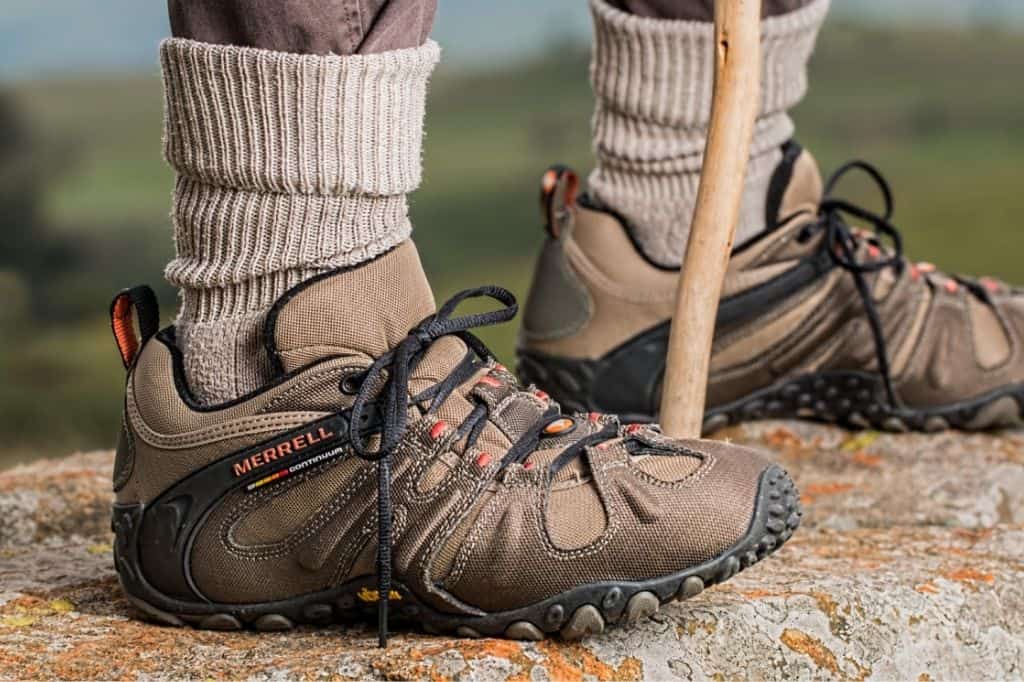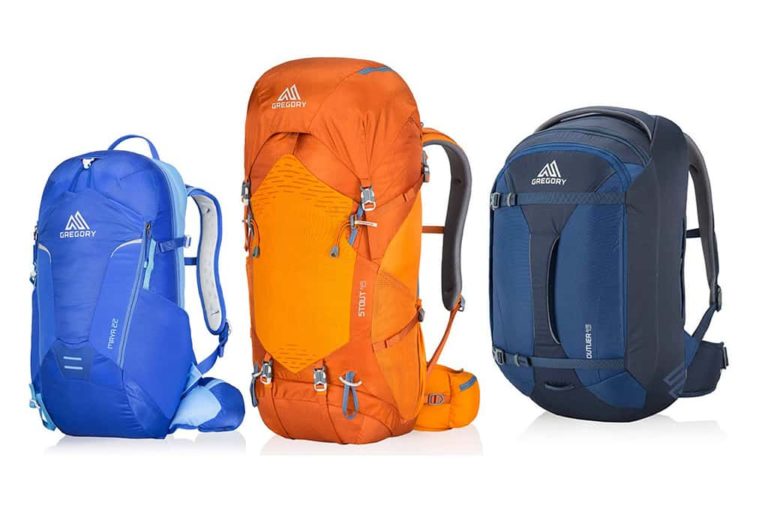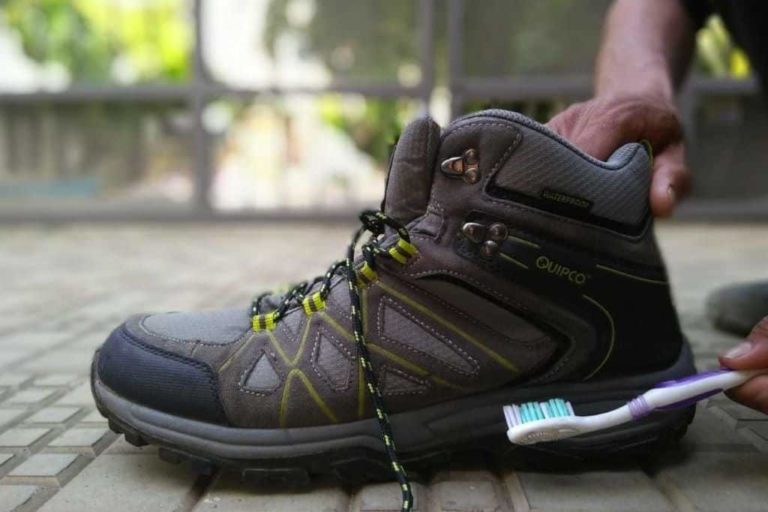How to choose hiking shoes for kids
Whether you’re just planning a quick family hike or an overnight camping trip, the right pair of kids’ hiking shoes can be a tremendous asset. As with regular hiking boots, there are many brands and types of kids’ hiking shoes available, so the trick is to find the pair that’s best for your child’s needs—and, since they’re kids, you’ll also want to find a pair that will still look cute on them!
Read how to choose trekking boots here.
Hiking shoes for kids are an excellent choice for young adventurers since they are durable and provide support without being too heavy. While most shoes aren’t designed with kids in mind, hiking shoes are specifically designed for kids ages 4 to 12.
Some hiking shoes for kids are even waterproof, which is a significant benefit for hiking in wet weather, and many offer shock absorption for protection from rocks and roots. Hiking shoes for kids are usually lightweight and breathable, which is essential for hot days and cold ones since kids will have more trouble regulating their body temperature than adults.
Dive in to know more on how to choose the best hiking shoes for your kids:
Hiking shoes for kids: How to choose
1. Durability is a-must
One of the first things you should consider before buying hiking shoes for kids is what they will be doing while wearing them. If you have a child that likes to go on short hikes and adventures around your local area, then you probably do not need a shoe that is as sturdy as one that will be used for long-distance hiking.
When looking for shoes for kids to use on longer hikes, durability is essential. You want to find a pair of shoes that will not fall apart after just a few miles of hiking.
2. Get hiking shoes that complement the season
Hiking shoes for kids are not the same as hiking boots. Hiking shoes also must be season-appropriate, or they will not provide the proper protection.
There are three types of hiking shoes for kids: High-top hiking shoes, low-cut hiking shoes, and breathable sandal-type hiking shoes.
A. High-top hiking shoes: High-top hiking shoes for kids are heavier and better suited for cold weather. They contain more insulation than low-cut shoes, and they don’t offer as much mobility in the toes or ankles, so they are better for kids who want the most protection for their feet.
If your child will be wearing hiking shoes for many different seasons and activities, you probably want to go with high tops because they will be better protected from the cold.
B. Low-cut hiking shoes: Kids’ low-cut hiking shoes will be lighter weight, which is great if your child is doing a lot of long hikes in warmer weather or even everyday adventures. These shoes have softer soles and are more flexible than high-tops giving your kids’ feet more room to move naturally and provide support. What they lack in warmth, however, they make up for in mobility.
C. Sandal-type hiking shoes: Sandal-type hiking shoes are lightweight and offer support to the foot. This type of shoe provides a durable platform with a sole that is designed to be flexible and have the best traction for outdoor excursions. They are a good choice for kids who like to walk around in urban and even suburban areas, but they are not great for rock climbing or skiing activities.
High-top hiking boots are going to be the most comfortable for long hikes because the shoe’s top will keep your child’s feet warm throughout the hike, but if you want to find a shoe that is optimal for warmer weather, you might want to go with low-cut hiking shoes.
3. Measure the size of the feet
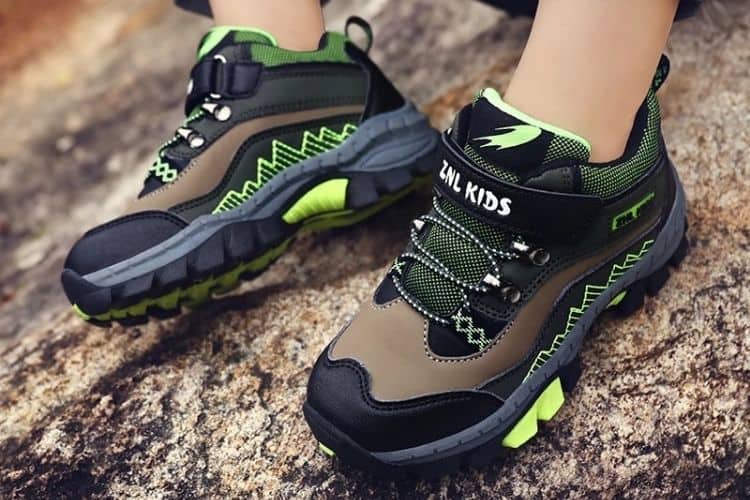
The best hiking shoes for kids are the ones that have a proper size. These sizes are based on the child’s age and shoe size. If you’re not sure what size to buy, it is always better to use a Brannock device.
A Brannock device is a foot-measuring device used to measure the length and width of the human foot. The device is designed to measure the feet of an individual while standing.
Plus, it is also best to opt for hiking shoes that are a half size or one size larger than the child’s street shoe.
4. Check for the soles with good traction
Your kid’s shoe should have excellent traction on all kinds of surfaces. Having a sturdy foothold will ensure that they have a safe and comfortable time on the trail. Some of the best hiking shoes for kids have a traction feature.
The sole of a good hiking shoe should be thick enough to protect the foot from bumps, stones, and uneven surfaces. For your child’s safety, it is a good idea to make sure your child has shoes that will not slip on rocks, wet leaves, or ice. The presence of this feature is just one more reason to pick the best hiking shoes for your child.
The soles are made of rubber or something similar and will provide a good grip on most surfaces. If your child is hiking in a lot of wet environments, these are shoes you’ll want because water-soluble materials do not provide as much grip when they get wet.
If your child is doing a lot of hiking on different surfaces, you should look for shoes with deep treads that will grip both wet and dry surfaces.
The advantage of having grippy traction is that it’s going to make it easier for your kids to hike on hills or trails without slipping or struggling. They will also provide more comfort on various surfaces, such as flat ground, grass, loose dirt, and other loose materials.
5. Straps or lace?
Opt for a velcro strap instead of laces because it is easier to get on and off than laces, especially when you’re in a hurry. It also provides an adjustable fit, which is great for growing feet.
If you need extra room in the forefoot, consider a hiking cleat where the shoe wraps around the foot and then clasps with velcro. The straps add comfort and provide a more secure fit, which will make it easier to move on the trail.
Also, consider if a shoe has a heel strap. The heel strap is a device that slides over the top of the shoe’s heel and provides support and a firmer sole to prevent slipping on the heel.
6. Protect your child’s ankles
If your child is hiking in a dry environment, it’s probably safe to skip this feature as there is little risk of injury when walking on flat surfaces. However, if your child will be hiking in the rain or in rugged conditions, they may want ankle support.
If that’s the case, you should look for a hiking shoe with a high ankle collar or a rugged ankle cuff to protect the ankle from injury.
7. Stiff heel cup
A stiff heel cup provides support on uneven surfaces and prevents slipping on smooth surfaces.
It also means that there is an extra layer of protection for the arch of your foot against rocks and debris. Your child’s hiking shoe should be stiff enough to support your foot but not so stiff that it interferes with their walking.
8. Check for bumped toes in the shoes
Your kid’s shoes should have a rubber toe bumper to protect the toes from getting squished. The bumper is also crucial for hikes with slippery surfaces, like rock slabs.
The bumper should extend just below the tip of your child’s toes to keep debris out and prevent your child from losing their footing.
9. Waterproof or water-resistant
The hiking shoes of your kid should be waterproof or water-resistant. They’re not just for boots anymore, and these lightweight shoes should be perfect for taking on those drenching, wild hikes.
Coming from a big trek and want to know how to clean your boots? Click here.
In kids hiking shoes, water resistance is crucial because it offers safety from the many hazards they might encounter on a hike. The straps that hold the shoe in place, especially when they’re wet, can cause blisters.
10. Do not compromise on breathability
Hiking in wet conditions? Then your child will need waterproof shoes, but do not compromise on breathability.
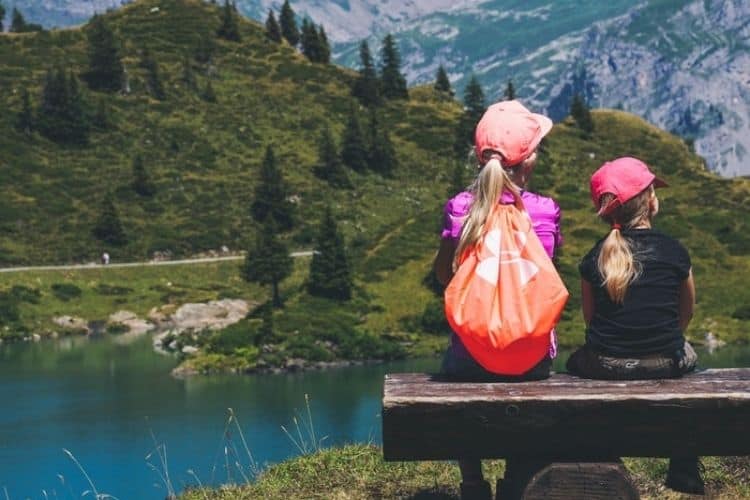
To stay comfortable, your child’s hiking shoes should provide breathable designs with adequate ventilation. Moisture-wicking materials can also help a lot, as wet feet are susceptible to blisters and infection.
It is essential, especially if your child is allergic to mold and fungi. You have to make sure that these shoes are suitable for your child’s feet, and as such, it is essential to look into the features of the shoe.
The most common materials used in making kids’ hiking shoes are mesh, synthetic leather, rubber, and suede. All of these materials have their own pros and cons, and you should choose the one that suits you best or your child’s needs best.
11. The shoes must be lightweight and flexible
Kids have smaller feet than adults, so once you find the size that fits your child, you may need to look for a pair of shoes specifically designed for kids.
Kids’ hiking shoes are usually made with lightweight materials, such as mesh fabric, which makes them more breathable, and they are usually quite flexible. (You’ll be able to bend them down at the toes and slide them on like regular shoes.)
The good thing about kids’ hiking shoes is that they are basically designed with your child in mind, which means they don’t have as many holes or features as a lot of adult hiking shoes do.
It makes them perfect for kids because they will be more comfortable and provide the proper protection. That said, you should always consider whether or not a pair of shoes will work well for your child’s lifestyle and activities.
Hiking shoes for kids: Additional info
Socks
The correct socks play a considerable role in providing comfort while walking in a pair of boots.
It is best to wear woolen socks so that your kid’s feet remain warm while walking during the winter season.
Plus, it is ideal for wearing good quality socks instead of cheap ones; they last longer and provide comfort and protection against blisters.
It is best to make sure the socks are lightweight and have a soft cushion feel to them. The thinner the sock, the more it tends to conform to your foot shape, reducing the impact on your feet while walking.
Fit
The feet should not touch the end of the shoe. Your kid should walk around with the shoes at home to break in the boot.
Make sure that your kid’s feet do not touch the end of the shoe. Ask your child if s/he is comfortable around the ankle and toe base area. It is vital to understand that your kid’s feet should not hurt when the shoe bents while hiking.
Check out the list of the eleven best hiking shoes for kids as curated by FamilyVacationCritic here.
Hiking shoes for kids: Conclusion
Lastly, ask your child if they like the shoes because well, you sure want to keep your kid happy. In the end, look for shoes that are comfortable and flexible enough to allow for the natural movement of a child’s foot rather than the designs and colors.
All these are part of the factors that you should consider before choosing a specific type of shoe. The key is to keep your child in comfort and functionality, as well as support.

